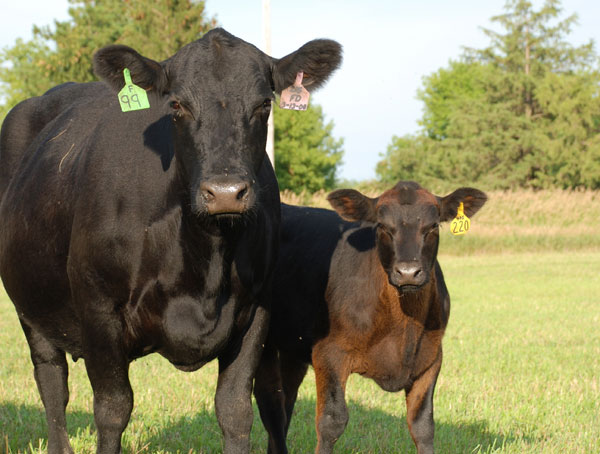Minerals Matter | Impact on cow reproduction
Trace mineral supplementation not only increases reproduction efficiency, if supplied during gestation, it is showing results of heavier animals at weaning.
August 13, 2020

The female is the factory on the ranch. She is responsible for raising a calf year after year, but this is not possible if she isn’t in proper nutritional health. “The impact of mineral supplementation is as or even more substantial than energy and protein for proper reproductive health,” says Reinaldo Cooke, Texas A&M Beef Cattle Production Specialist. “Minerals have a huge impact on reproduction.”
A lot of focus is put on making sure cows have the energy and protein requirements to fuel their systems. But this often overlooks other essential nutrients like vitamins and minerals. A lack there can defeat the ability to strive for reproduction goals.
Lacking the required minerals in the diet can become a limiter in the effectiveness of the normal functioning of nearly all processes in the cow’s body. Mineral management is complex. “Each mineral is critical to the metabolic system of the animal and each mineral has its own importance, but each one also has its connection in working with other minerals,” Cooke told cattlemen during NCBA’s producer education webinar series focusing on mineral nutrition strategies.
“Many beef cattle systems rely on forages to provide nutrients, but the forages may not always be nutritionally complete.” Therefore, mineral supplementation programs need to be designed with these three factors in mind: the animal category, the stage of production, and the basal diet (the forage).
Cooke explains requirements are established for macro-minerals and micro-minerals (trace minerals) as a starting point for beef cattle producers to follow. But many times, the microscope is not focused on minerals until something bad happens on the ranch.
“Minerals are the largest pound per pound expense in nutritional management and have a critical importance to reproduction. They are often the root cause of wrecks like open cows, embryonic death, delayed puberty, and reduced fertility,” explains Cooke. He reminds producers, if the cow is sick or dead ̶ it won’t breed.
Focus on trace minerals
“Trace minerals, such as selenium, zinc and copper, have very specific roles in enzyme development impacting cell functions for the reproductive systems and are often the minerals that come to mind when reproductive issues surface,” says the beef cattle nutritionist.
The challenge is to determine what is the best package of minerals needed based on the forage diet the cows can access. While guidelines and recommendations determined from historical research have laid the foundation for beef cow nutrition, Cooke is seeing promising results from research on alternate forms of trace mineral supplementation. These sources include mineral supplementation from inorganic, organic, or injectable sources.
Inorganics include sulfates, oxides and chlorides and have a bioavailability between 40-50%. Organic sources include elements bound to simple amino acids or more complex organic structures. Organic trace minerals often have greater bioavailability than inorganics, are more stable in the digestive tract, and result in reduced losses due to antagonists, he explains.
Becoming more prevalent in the industry are sources that are injected directly into the body, resulting in rapid increase in trace mineral status and prompt metabolism. “Using injectable minerals is an option if the cows are not in good shape and need to be brought back into better nutrition in a shorter time period,” says Cooke.
An example might be cows coming off pasture where access to supplementation was limited or sudden changes happened in the grass quality due to drought or other environmental factors. He cautions the use of injectables should not replace a good year-round supplementation program.
Cooke is excited about promising research results on fetal programming. This research is allowing for the opportunity to shift the focus further down the reproduction chain to learn about the impact nutritional practices during a cow’s gestation will have on her offspring. He reports supplementation of trace minerals during gestation is showing results of heavier animals at weaning, which in turn is allowing that animal to reach puberty sooner and enhancing the reproductive future of the cow herd.
Baseline requirements for mineral supplementation have guided the industry for many years, but researchers are not stopping there. “With the complexity associated with mineral supplementation and new sources becoming more accessible to the cow-calf producer, research may find that previous requirements will need to be shifted and adjusted to meet a cow’s nutritional needs,” says Cooke.
B. Lynn Gordon is a freelance writer from Sioux Falls, S.D.
You May Also Like



